5 protein myths: You may be surprised

Paula - stock.adobe.com.
“Low carb,” boast some labels. “Fat free,” claim others. But “low protein?” That’s not a thing. Protein is a selling point. But its overblown reputation has been fueled by a jumble of myths. Here’s the truth about some popular ones.
Myth #1: Most people are getting too little protein
“What I hear from many people and social media is ‘I know what the RDA for protein is, but I think I might need more than average, so I’m going to have some extra protein,’” says Christopher Gardner, professor of medicine at the Stanford University School of Medicine.
But most people don’t understand how experts set the RDA—or Recommended Dietary Allowance—for protein and other nutrients.
(The RDA for protein is 0.8 grams for every kilogram—or 0.36 grams for every pound—you weigh.)
“They start by figuring out what the average person needs,” explains Gardner. “But if everybody got the average, half of us would get too little, because some people need more and some need less than average.”
So instead, the RDAs are set considerably above—technically, two “standard deviations” above—what the average person needs.
“That means 97.5 percent of the population meets or exceeds their requirement if they get the RDA,” says Gardner. “So aiming above the RDA is adding a safety buffer on top of a safety buffer.”
In the U.S., only a few groups of adults get less than the RDA for protein. That includes an estimated 19 percent of females and 13 percent of males aged 71 or older.
“That’s primarily related to not eating enough food, because appetite sometimes decreases in older adults,” says Bettina Mittendorfer, senior associate dean for research at the University of Missouri School of Medicine.
Still, that means at least 8 out of 10 older adults do get enough protein. And the average adult (of any age) gets a third more protein than the RDA, and a quarter get twice the RDA, says Mittendorfer.
Why? “It’s not because people go on a high-protein diet,” she explains. “It’s because they overconsume food.”
Myth #2: Your body can store extra protein

“We all know the body has an infinite capacity to store fat,” says Gardner. “You can point to it in your belly and your butt and even in the pads of your hands.”
And your body doesn’t have to turn fat into something else to store the excess. You can tuck it away in a limitless inactive reservoir.
“And as athletes know, carbohydrate is stored in the liver and skeletal muscle as glycogen,” though in limited quantities, notes Gardner.
But protein is different. Some may be used to make muscle or other lean body tissues. But there’s no place to put the extra.
“If you eat extra protein today, by tomorrow, it gets turned into carbs or fat,” says Gardner. “You can’t store protein for later.”
Your muscles would act as a protein bank, however, if you were eating too little protein.
“If you were deficient in protein, you would steal it from your arm or leg muscles—not your heart or the muscles around your lungs, because you need your heart to beat and your lungs to function,” says Gardner.
“But you don’t have to be able to do a biceps curl or a squat.”
But breaking down any muscle comes at a cost. “Muscle isn’t just a storage depot like belly fat that’s not doing anything,” notes Gardner.
What’s the clearest sign that bodies aren’t equipped to store extra protein?
“Otherwise we would bulk up just by eating it,” says Mittendorfer. “And we don’t.”
Myth #3: More protein means more muscle

Your body does need protein to make muscle, but only up to a point.
“You maximize muscle protein synthesis at about 25 to 30 grams of protein per meal,” says Mittendorfer.
“If you’re below that, eating more can increase your muscle mass. But if you’re eating enough protein, increasing it further is unlikely to increase muscle mass or strength.”
Take the OPTIMen trial. Scientists randomly assigned 48 men aged 65 or older to get packaged meals each day that supplied either the RDA or 60 percent more than the RDA for protein.
After six months, there was no difference in either lean body mass or muscle strength or power. (Some of the study’s authors had ties to the meat, egg, or dairy industries.)
Protein’s impact on muscle depends on age. “For any amount of protein that older adults eat, they get less of a gain in muscle mass” than younger adults who eat the same amount of protein, says Mittendorfer. “That’s thought to cause the decline in muscle mass with aging.”
What’s more, extra protein plus strength training may boost muscle in adults aged 18 to 45 (though most studies enroll people aged 18 to 30), but not in older people.
Why? “Younger people haven’t reached their growth potential,” Mittendorfer explains. “So extra protein has a little extra benefit with resistance exercise training in the young, but it’s small.”
Make no mistake, though. Regardless of age, it’s largely exercise, not protein, that matters most for your muscles.
For example, scientists randomly assigned 184 healthy people over 65 to one of five groups. Two groups took a protein supplement (20 grams of whey) twice a day and did either light or heavy resistance training three to five times a week. The other three groups took a supplement with either whey, collagen, or carbs twice a day but did no training.
After a year, only the exercise groups had better knee strength, and only the heavy-training group had larger thigh muscles. (The dairy industry partly funded the study.)
“The main effect on muscle comes from exercise training,” says Mittendorfer. “Gains in strength are bigger and occur sooner than gains in muscle size. And it’s strength you need to climb the stairs and maintain your health span.”
Does a higher dose of protein help if it comes right after a workout?
Researchers randomly assigned 50 people aged 40 to 64 to reach either 1.0 or 1.6 grams of protein per kilogram of body weight (both above the RDA) by eating an extra 15 or 30 grams of protein (as minced beef steak) immediately after a resistance workout three days a week, plus either 15 or 30 grams of protein (in a beef powder drink) one to two hours before bed each night. (The beef industry funded the study.)
After 10 weeks, both groups got stronger. The difference between groups? Zip.
And in 2024, when the Agency for Healthcare Research and Quality examined studies published since 2000, it found “inconsistent results” on protein’s impact on the loss of muscle mass, muscle strength, or physical performance with age.
(The report was done to help experts update the RDA for protein. It’s not clear when the years-long process will be complete.)
Myth #4: Animal protein beats plant protein
“There’s a misconception that you have to get protein from animal foods, because if you shift to plants, they’re missing amino acids,” says Gardner. “That’s a myth. All plants have all nine essential amino acids.”
(Your body can make 11 more non-essential amino acids.)
Plant proteins do differ in minor ways, but those differences don’t matter (unless you have to survive, say, only on rice).
“Grains are proportionally lower in lysine, and beans are proportionally lower in methionine,” notes Gardner. “But grains have a little more methionine than usual, and beans have a little more lysine than usual.”
Does that mean you have to eat beans and grains together? Nope.
“If you weren’t paying attention, and you just ended up eating enough protein by the end of the day, you’d get enough of all the amino acids without even counting,” says Gardner.
“With a few rare exceptions, when you eat animal or plant protein, you can’t absorb it until you break it down into its amino acids. Then your body reassembles them. Does it remember whether the amino acid came from broccoli or a pig? No. It’s just a building block.”
And don’t expect animal protein to build more muscle or strength than plant protein.
In a recent study—funded by the beef industry—scientists randomly assigned 40 active adults aged 20 to 40 to eat either vegan (plant-only) or omnivore (plant-and-animal) diets provided by the researchers.
“For each diet, half had their protein evenly distributed among five small meals and the other half had 10 percent of their protein at breakfast, 30 percent at lunch, and 60 percent at dinner,” notes Gardner.
After nine days, the researchers took muscle biopsies to measure protein synthesis.
“Neither the protein source nor the distribution of protein over the day mattered,” says Gardner.
Likewise, in a study of 34 active people aged 65 to 79, an omnivore diet led to no more muscle synthesis than a vegan diet.
“Most people can meet all their needs on a plant-based diet,” says Gardner. “We can stop obsessing about getting enough protein or the right amino acids.”
Myth #5: Extra protein helps you eat less
“There’s no good evidence that protein makes foods more satiating,” says Gardner. He cites a study by Barbara Rolls, professor of nutrition at Penn State University.
“She made five versions of lunch and dinner entrées—a chicken casserole and a shrimp stir-fry—that had 10, 15, 20, 25, or 30 percent of calories from protein, but they all looked the same.” That’s because the ingredients were finely chopped.
“People were told to eat until they were full, and they all ate the same number of calories per day,” says Gardner.
“If protein were more satiating, people would have eaten fewer calories on the days they got the higher-protein meals, but they didn’t.”
What about weight-loss diets?
In an oft-cited review, higher-protein diets reduced weight in people with excess weight by only one to two more pounds than other diets. (The review was funded by the beef, pork, dairy, and egg industries.)
POUNDS Lost, the largest and longest trial done, randomly assigned 811 people with excess weight to one of four diets that were higher or lower in protein, fat, or carbs. All four diets cut 750 calories a day.
After two years, the average weight loss was nine pounds. Those assigned to the higher-protein diets (25 percent of calories) lost no more weight than those assigned to the lower-protein diets (15 percent of calories). Nor did cuts in fat or carbs lead to greater weight loss.
However, “at two years, both groups were eating about 20 percent of their calories from protein,” notes Gardner. “It’s as though—not in the first month when you’re excited about a new diet, but a year out—you end up at about 20 percent.”
Do you gain less weight if you overeat protein?
Researchers had 25 young people eat diets that got 5 (low), 15 (normal), or 25 (high) percent of their calories from protein. All the diets had 40 percent (roughly 1,000) more calories per day than the volunteers needed.
After two months, the high-protein group had gained as much weight as the normal-protein group (14 pounds).
In fact, it was the low-protein group that gained less weight (7 pounds). Why?
“Those who didn’t get enough protein lost some muscle,” says Mittendorfer.
So if you think that overdoing protein-fortified cookies, waffles, or popcorn is harmless, think again. It’s no different than overdoing ordinary cookies, waffles, or popcorn.
High-protein junk
Want to spike sales of a junk food? Just add protein.
Power down
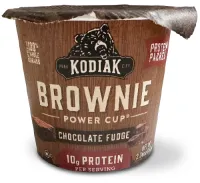
“10g protein,” boasts the Kodiak Chocolate Fudge Brownie Power Cup. Yes, it’s made with whole grains (plus gluten, whey, and eggs). But the first ingredient in each 280-calorie cup is added sugar (half a day’s worth). And the semi-sweet chocolate and palm oil supply 5 grams of saturated fat (a quarter of a day’s worth). Where does the power come in? Never underestimate the power of marketing.
Saltzels
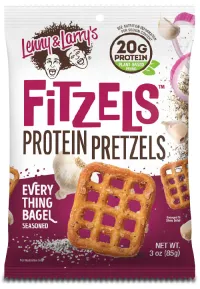
“Fitzels are a super snack situation fitting 20g of protein for muscles,” says Lenny & Larry’s Everything Bagel Fitzels. All it took was a dollop of pea protein to turn these white-flour pretzels into a health food. And to get the label’s 20 grams of “plant-based protein,” you’d have to eat the entire (3-serving) bag, along with its 380 calories and 900 milligrams of sodium.
White flour waffles
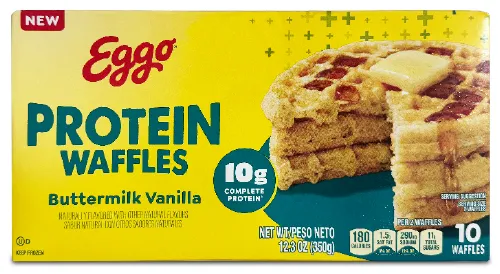
“10g complete protein,” says Eggo Buttermilk Vanilla Protein Waffles. “Delicious goodness to KICKSTART your day.” It’s a food company’s dream. Just dress up some waffles that are made mostly out of white flour, sugar, and oil with added vitamins, soy protein isolate, and whey protein concentrate. Why would anyone bother with fruits, whole grains, yogurt, or other healthy breakfast foods?
Support CSPI today
As a nonprofit organization that takes no donations from industry or government, CSPI relies on the support of donors to continue our work in securing a safe, nutritious, and transparent food system. Every donation—no matter how small—helps CSPI continue improving food access, removing harmful additives, strengthening food safety, conducting and reviewing research, and reforming food labeling.
Please support CSPI today, and consider contributing monthly. Thank you.
More on deceptive marketing
Food marketing: These 9 foods look healthier than they are
Fact vs. Fiction

13 foods with more salt, sugar, or fat than you might expect
Healthy Eating

Taking GLP-1 obesity drugs? Here's what to eat or avoid.
Weight and Health
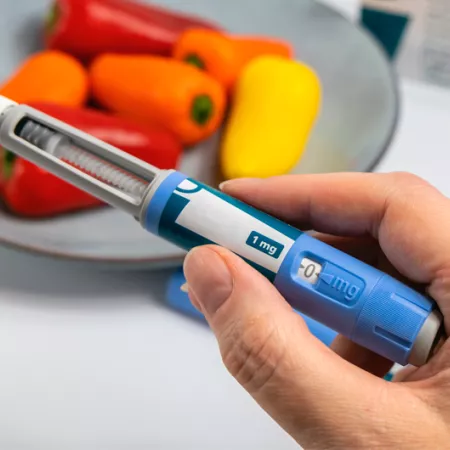
Prevagen ordered to cease ‘memory improvement’ claims
Supplements
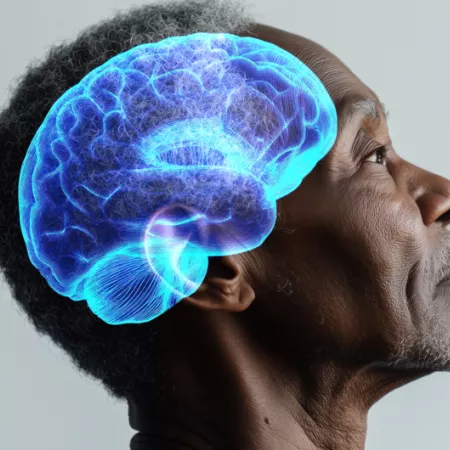
April Fools! Watch out for these food label tricks
Fact vs. Fiction


